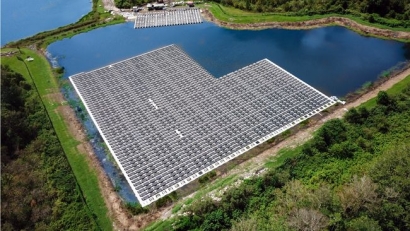
A collaboration between Fort Bragg, Duke Energy and Ameresco, this utility energy service contract project will provide carbon-free on-site generation, supplement power to the local grid, and provide backup power for Camp Mackall during electricity outages.
"We approached Duke Energy with the idea of a floating solar array unsure of how they would respond to the innovative concept,” said Audrey Oxendine, Fort Bragg Energy and Utilities Branch Chief. “However, Duke Energy was excited to take on the challenge and work with us to make an idea into reality.”
An electronic “recloser,” funded by the Environmental Security Technology Certification Program, is also being demonstrated as part of the system. Reclosers respond to transient events, like a tree limb brushing against a power line, to quickly reset the system and restore power. This technology provides better protection for system power lines and minimizes damage to sensitive electronic equipment in the event of power interruption.
Floating solar power could have a big future. The U.S. Department of Energy’s National Renewable Energy Laboratory (NREL) researchers estimate that installing floating solar photovoltaics on the more than 24,000 man-made U.S. reservoirs could generate about 10 percent of the nation’s annual electricity production. Currently, floating solar makes up only about 1-2 percent of the world’s solar capacity.
“This project fulfills the commitment made in our Army Climate Strategy to increase resilience while delivering clean energy and reducing greenhouse gas emissions,” said Jacobson.
“When we collaborate with local utilities and industry to promote energy resilience while powering the local grid, it is a winning solution across the board.”
Fort Bragg is the largest military installation by population in the Army and is the home of Airborne and Special Operations forces, with approximately 49,000 military personnel, 11,000 civilian employees and 23,000 family members.

